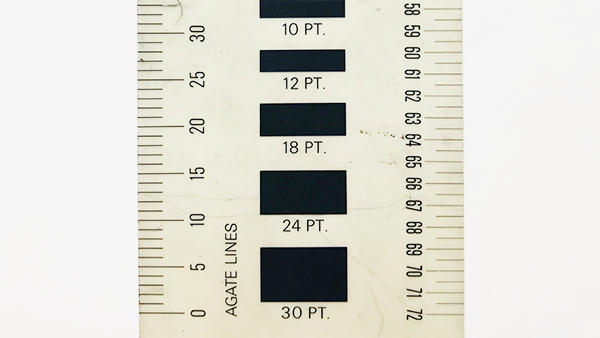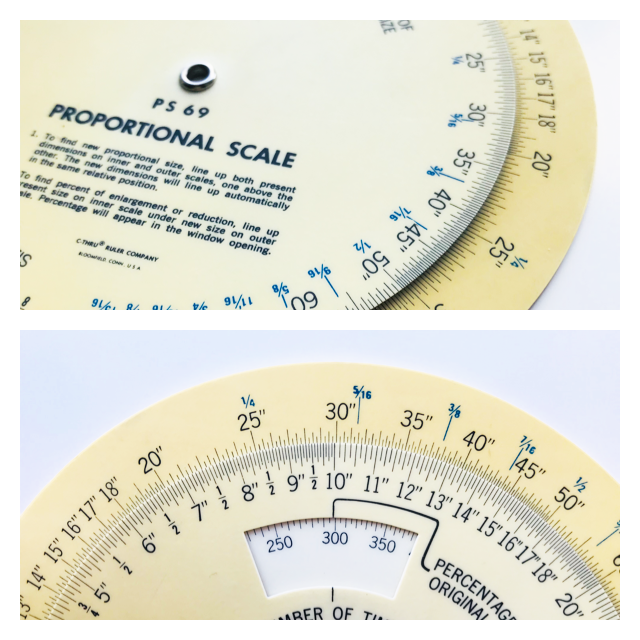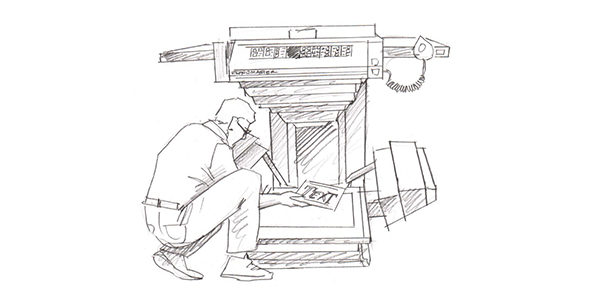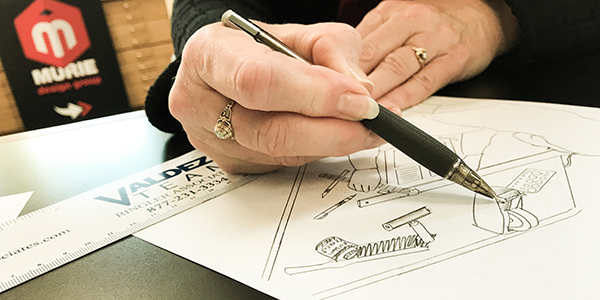Graphic Design Before Computers
Here are 5 things that you probably didn't know about graphic designers before computers.
These past few weeks our team has been cleaning out what we lovingly refer to as our company "junk room." Over the years, 30 to be exact, it has been filled to the brim with old chairs and desks, dusty boxes filled with decades-old files, sad-looking Christmas decorations and also ...
... tons of pre-computer age design tools and the materials that go with them.
I've heard a few stories here and there from other designers around the office who recall funny times back when everything was done by hand, and I must admit, I have had to question the validity of it all as I try to piece together the idea of creating an entire project by hand. The only things we create by hand these days are little wireframe doodles during client meetings that never see the light of day because they are instantly reworked and perfected in a protyping app!
But after hearing a few more stories (and seeing a few pictures for proof), I am baffled yet in awe that not very long ago things were done entirely different. Helena Freilich - our resident "pasteup" veteran - recalled that she didn't start using computers to design until the mid 1990s. That's barely a 20 year difference from pencil and paper to keyboards and cursors.
Today we are taking you back to a magical time when all design work was created and delivered solely by hand. A time when it would take a week and a small army to make something as tiny as a label for a medicine bottle. A time when you had to have a wide range of artistic skills just to complete a design project from start to finish. And a time when the artistry was at its purest.
Here are a few more things that you didn't know about what it truly was like to be a graphic designer before computers:
1
They Outsourced Their Typeset
These days all it takes to change a font size or color is a quick click of a button - but during the age before computers the process was dramatically different. A designer would have to first spec the type they wanted to use for their project then send it off to someone whose actual title was - wait for it - Typesetter.

To spec the type, the designer would use something like a Schaedler ruler that would help them choose the appropriate font point, picas and agate lines for their text copy. Another important spec to give a typesetter was the exact area the text needed in order to fit properly in the space they were planning.
These specs were sent to the typesetter and then it became a waiting game. Helena recalls that "it would usually take a day or two." Yikes - 2 days worth of formatting your font for a project? If that were somehow a reality today I'm pretty sure I would run from the industry with hands in the air and screaming! Now I feel a little guilty for grumbling under my breath in annoyance over the slight hesitation my computer had while it loaded the font drop-down menu!
It’s crazy to think that just because a few buttons were developed for a UI that an entire field of an industry could be eliminated! Let’s hope those who once claimed the job title of Typesetter now make their millions off of designing our favorite fonts!
2
They Physically Cut and Pasted
The only cutting and pasting that was ever done in the design world before the computer literally came from cutting something out and pasting it up on an artboard. When the designer finally had the typed copy in their hands it was usually in paper roll form, which meant that they would need to carefully cut out the line of text they wanted to use and paste it onto their artboard. Same goes for any other illustrations or assets that was used on their artboards.
This is what's referred to as a "pasteup" — not to be confused with "pay stub" — which is what I thought Helena had been saying this whole time! I couldn't figure out what she was talking about until I finally asked her to clarify why they called their work pay stubs. "Could it be that the shape of their artboards looked like a pay stub in some way? Is it a metaphor for the prize at the end of the month?" All my internal assumptions of the renegade, poetic artists before me were entirely wrong. A pasteup is just that — a slightly inverted artboard where all of the artwork was pasted onto!

Today as a designer, if I decide to make an element on my artboard smaller or larger I easily scale a perfect proportion of the element in just a few clicks. During the BC Era (before computers), designers would use something called a proportion wheel to get the job done.

The Designer would first measure the exact dimensions of the element and locate that number on the inner wheel. Then they would turn the wheel until it lined up with the desired dimension on the outer wheel. A window on the smaller wheel would then reveal the scaled percentage of the original dimension. From there, the designer would apply that proportion setting on their stat camera for reshooting. Most design agencies had their own stat camera while some outstourced that work as well ;)
3
They Always Hit Their Step Goals

Aside from the irony of having the original stand up desks, most designers in the BC era never worried that there was only a measly 2,500 steps on their FitBit by the end of the workday! They never had to worry because they were constantly in and out of various rooms around the office ...

Maybe a designer would start the day standing at their desk, creating artwork for their project, when next they could be in the dark room taking photos on the stat camera. After developing the images, they could leave the dark room and go straight to the light table to inspect the images they took. If everything was looking good, the next step was to head off to the waxer machine.
Here they would run all of their assets through the hot wax so that they would be ready for pasting everything onto the artboard. A quick walk back to their desks and they were ready to assemble all of the pieces and create the final masterpiece. But — more times than not — a little tweaking was necessary that left the designer with no choice but to start the whole process over again and get their butts' literally back to the drawing board!
4
They Had Bigger Work-Safety Problems To Worry About
Yes, as a millennial I will admit that one of my biggest concerns working in the design/tech industry is that I am in need of reading glasses — caused by staring at a computer screen for hours at a time — at a much younger age than my parents and grandparents. I'm sure designers like Helena, who have seen the evolution of the design industry during her career, just look at me and think, "If you only knew what it was really like back then!"
"We kept the Band-Aid business alive."
-Helena Freilich
Before computers there were plenty of hazards a graphic designer would have to steer clear from and they usually came from things like The Perilous X-Acto Blade, The Treacherous Waxer Machine, The Deceptive Dark Room and of course the intoxicating scent from the opened bottle of Rubber Cement! Helena had a few funny stories from all of these in which she found herself crying "ouch!"
I've heard stories of times when the x-acto blade missed the designer's paper and went straight into their hand. There are stories about getting second-degree burns while using the hot waxer, tripping over things while navigating the dark room and of course the constant high that comes while using rubber cement.
5
They Unloaded [Not Uploaded] Their Source Files
When a project was wrapping up it was usually the Art Director's job to make sure everything was in order and that the final pasteup was ready to go to press. These days you just send digital art files straight to the printer but back then the pasteup artboard was sent either by courier or hand delivered. I imagine it was no easy challenge trying to safely move a large artboard from one place to the next!
The entire artboard was then shot with a high resolution camera that could be developed with bluelines and color seperations. If any mistakes were found, that artboard would need to be fixed and new proofs would need to be made which could end up being very costly! And finally the designers or art directors would go to the printer for the day to do a press check to make sure all the colors were correct and that everything was in order. Ah ... the good ol' days ... or at least what I'm told of them!
